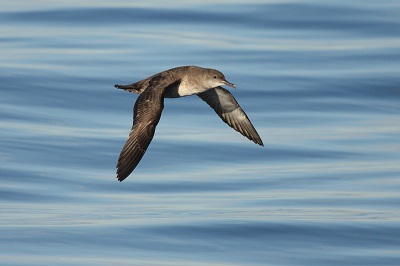
Bienvenidos
Bienvenidos al sitio web de la Estación Biológica de Doñana., Instituto perteneciente al Consejo Superior de Investigaciones Científicas....

La Estación Biológica de Doñana: EBD-CSIC
La Estación Biológica de Doñana es un Instituto Público de Investigación perteneciente al Consejo Superior de Investigaciones Científicas, CSIC, dentro del área de Recursos Naturales...

Misión
Nuestra misión es llevar a cabo una investigación multidisciplinar al más alto nivel y dirigida a la comprensión desde el punto de vista evolutivo de cómo se genera la biodiversidad...

Cómo lo hacemos
Aplicamos múltiples técnicas dentro de un contexto multidisciplinar, desde la genética molecular al seguimiento remoto, la creación de modelos y el análisis isotópico...

Seguimiento de procesos naturales y biodiversidad
Los seguimientos de fauna en el Espacio Natural Doñana abarcan un amplio abanico de comunidades y especies, tanto en lo referente a grupos de organismos acuáticos como terrestres...

Objetivos
Entre nuestros objetivos se incluyen el estudio de los procesos ecológicos y evolutivos mediante la combinación de trabajo de campo, modelos matemáticos, análisis genéticos y estadísticos...
 Destacados
Destacados
-
 La Fundación Jaime González-Gordon ofrece cuatro becas para el desarrollo de Trabajos de Fin de Máster sobre Doñana
La Fundación Jaime González-Gordon ofrece cuatro becas para el desarrollo de Trabajos de Fin de Máster sobre Doñana -
 Cinco contratos para desarrollar la tesis doctoral en la Estación Biológica de Doñana - CSIC
Cinco contratos para desarrollar la tesis doctoral en la Estación Biológica de Doñana - CSIC -
 Actividades de la Estación Biológica de Doñana en la Noche Europea de los Investigadores
Actividades de la Estación Biológica de Doñana en la Noche Europea de los Investigadores -
 La ICTS-RBD se prepara para la 30ª Campaña de Anillamiento de Paseriformes Migratorios en Doñana
La ICTS-RBD se prepara para la 30ª Campaña de Anillamiento de Paseriformes Migratorios en Doñana -
 Inicio procedimiento nueva dirección EBD-CSIC
Inicio procedimiento nueva dirección EBD-CSIC
 Noticias
Noticias
Where to head: environmental conditions shape foraging destinations in a critically endangered seabird
Foraging distribution of flying seabirds is constrained by environmental factors influencing individual decision-making. This must be particularly true during the breeding period, when individuals face additional limitations imposed by their central-place foraging behaviour.
A research team used GPS data loggers and Argos PTTs to track the foraging flights of Balearic shearwaters (Puffinus mauretanicus) during the chick-rearing period of 2011–2014 in the Balearic Islands (Western Mediterranean). They identified main areas used by tracked birds and characterised their productivity patterns. Based on a spatial seascape approach of flight costs varying with time, shaped by environmental processes as winds, the team also estimated flight costs to reach foraging grounds in outward and return trips from the colony. Individuals repeatedly used the closest areas on the Iberian continental shelf. However, sporadic and favourable wind conditions facilitated low-cost flight to more distant and equally productive areas of the western North African shelf.
The study is the result of the work carried out in the islets of the west of Ibiza since 2011. It is a collaboration between SEO / BirdLife, AZTI and the Initiative for Research on Biodiversity (IRBI), in which other entities have collaborated such as EBD, ICM (CSIC), LPO (BidLife, France) and CNRS (France). The work was supported by several projects, highlighting Interreg FAME, LIFE + INDEMARES and support from the Ibiza Preservation Fund.
outreach[at]ebd.csic.es
Referencia:
Isabel Afán et al. Where to head: environmental conditions shape foraging destinations in a critically endangered seabird. Marine Biology. https://doi.org/10.1007/s00227-021-03830-1
https://doi.org/10.1007/s00227-021-03830-1- Laboratorio de Ecología Molecular
- Laboratorio SIG y Teledetección (LAST)
- Laboratorio de Ecología Química
- Laboratorio de Ecología Acuática
- Laboratorio de Ecofisiología
- Laboratorio de Isótopos Estables
- Unidad de Experimentación Animal
- Visita virtual
- Unidad de Seguimiento
- Laboratorio de Camaras climaticas

